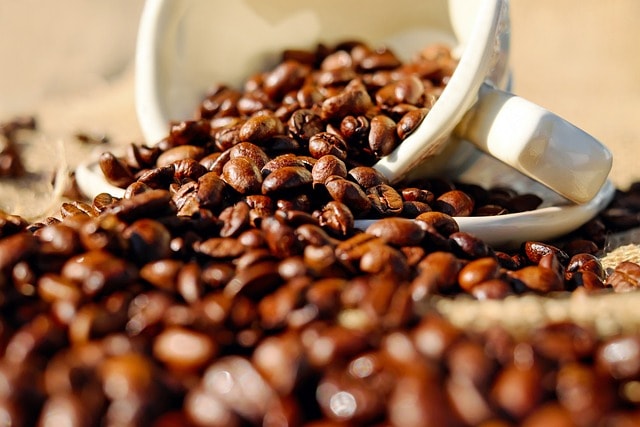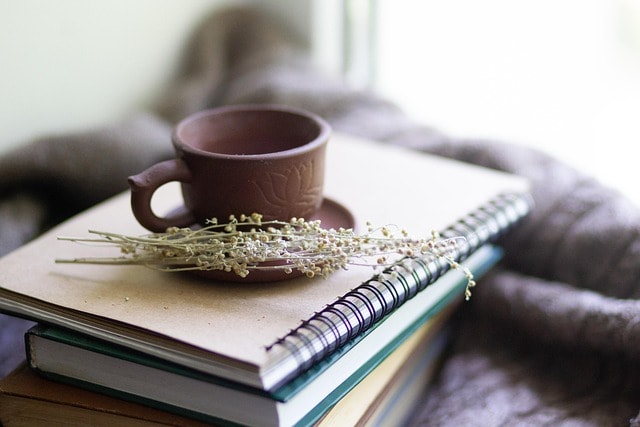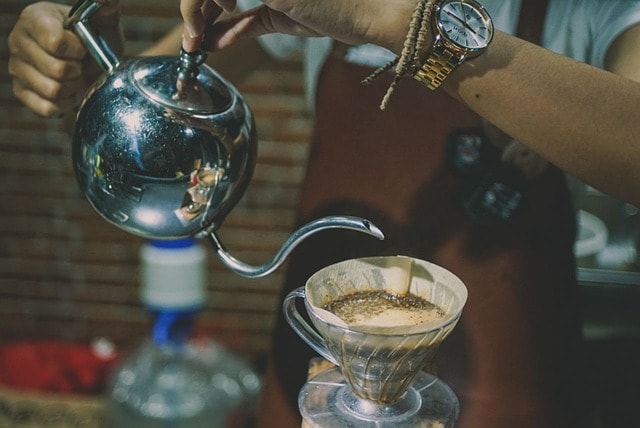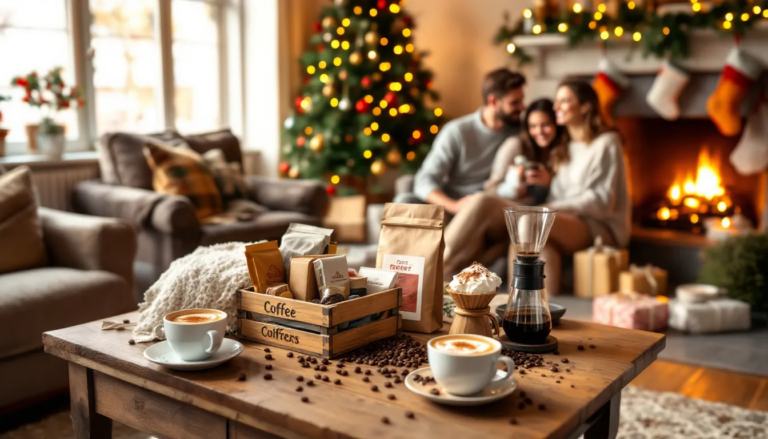Want to know how to make great coffee at home? This guide covers everything you need to know, from selecting fresh beans to mastering your brewing technique. Read on to discover simple tips and tricks for a perfect cup every day. For those who prefer convenience, using an automatic coffee maker is an excellent option. Choosing the right coffee brewing method, such as V60, Chemex, or Aeropress, is crucial for achieving the best results.
Key Takeaways
-
Fresh coffee beans are crucial for rich flavor; choose whole beans stored properly to maintain quality.
-
A burr grinder is preferred for consistent grind size, ensuring optimal flavor extraction based on brewing method.
-
Accurate measurements and water quality significantly impact coffee taste; use filtered water and a scale for best results to achieve better coffee.
-
Selecting the right coffee brewing method, such as V60, Chemex, or Aeropress, is essential for optimal flavor. Follow manufacturer recommendations for best results.
Start with Fresh Coffee Beans

The journey to a great cup of coffee begins with fresh coffee beans. Freshness is paramount because it directly affects the flavor and aroma of your brew. Using fresh coffee beans ensures that your coffee will have a rich, vibrant taste, rather than a stale, flat one. Coffee brewed with fresh beans has a richer flavor.
Whole beans are your best bet when it comes to brewing coffee. Pre-ground coffee loses its freshness quickly due to oxidation, while whole beans retain their quality for a longer period. To maintain the freshness of your coffee beans, store them in an airtight container, away from light, heat, and moisture.
Remember, the fresher the beans, the better the coffee. High-quality, freshly roasted coffee beans are your first step toward brewing a perfect cup. So next time you’re shopping for coffee, skip the pre-ground options and go for whole beans.
Coffee Beans vs Ground Coffee
When it comes to brewing coffee, the debate between using whole coffee beans and pre-ground coffee is a common one. Each option has its own set of advantages and disadvantages, and the best choice often depends on your personal preferences and brewing method.
Coffee beans are the go-to choice for many coffee aficionados. They offer a more nuanced and complex flavor profile, as the beans retain their freshness and aroma longer than ground coffee. Whole beans allow you to experiment with different roasts and brewing methods, giving you the flexibility to tailor your coffee to your taste. However, grinding coffee beans just before brewing can be a bit time-consuming, which might be a drawback for those with a busy schedule.
On the other hand, ground coffee is incredibly convenient and easy to use. It’s perfect for those who are new to brewing coffee or prefer a more straightforward process. However, ground coffee tends to lose its flavor and aroma quickly, especially if not stored properly. Additionally, the grind size may not be optimal for all brewing methods, which can affect the overall flavor of your coffee.
Ultimately, the choice between coffee beans and ground coffee comes down to your brewing habits and preferences. If you value a complex flavor profile and don’t mind the extra step of grinding, whole beans are the way to go. But if convenience is your priority, ground coffee might be the better option for you.
Essential Equipment
Coffee Grinder
A coffee grinder is a crucial piece of equipment for brewing coffee at home. Grinding your coffee beans just before brewing is essential for optimal flavor and aroma. There are two main types of coffee grinders: blade grinders and burr grinders. Burr grinders are considered the premium option, as they crush the roasted coffee beans more evenly and ensure a uniform grind, resulting in better-tasting coffee.
When choosing a coffee grinder, consider the following factors:
-
Grind Size: Look for a grinder that can produce a range of grind sizes, from fine to coarse, to accommodate different brewing methods. This flexibility allows you to experiment with different brewing techniques, such as espresso, French press, and pour-over.
-
Material: Stainless steel or ceramic grinders are durable and easy to clean. These materials ensure longevity and maintain the quality of your ground coffee.
-
Noise Level: If you plan to use your grinder in the morning, look for one that is quiet or has a silent operation feature. This can be particularly important if you live with others and want to avoid disturbing them.
-
Price: Burr grinders can range from under $50 to over $200, depending on the quality and features. Investing in a good grinder can significantly enhance your coffee brewing experience.
Some popular coffee grinder options include:
-
Baratza Encore Conical Burr Coffee Grinder: Known for its consistent grind and user-friendly design, this grinder is a favorite among coffee enthusiasts.
-
Breville Smart Grinder Pro: This grinder offers a wide range of grind settings and a digital display for precise control.
-
Capresso Cool Grind Pro: A more affordable option, this grinder is compact and efficient, making it ideal for everyday use.
By investing in a high-quality coffee grinder, you can ensure that your coffee beans are ground to perfection, enhancing the flavor and aroma of your brew.
Coffee Brewer
A coffee brewer is the device that actually brews your coffee. There are many different types of coffee brewers available, each with its own unique characteristics and advantages. Here are some popular options:
-
Drip Coffee Maker: A classic and convenient option, drip coffee makers are easy to use and clean. Look for a machine with a built-in grinder and adjustable brew strength. A drip coffee machine, such as the Moccamaster, offers consistency and ease, making it a staple in many households.
-
French Press: Also known as a cafetiere or coffee press, French presses are a popular choice for those who want a rich and full-bodied coffee. Look for a machine with a durable glass or stainless steel body. This brewing method allows the coffee grounds to steep in hot water, extracting deep flavors.
-
Pour-Over: Pour-over brewers offer a high degree of control over the brewing process and can produce a very flavorful cup of coffee. Look for a machine with a ceramic or glass body and a built-in filter. Tools like the Chemex or Hario V60 are popular choices for this method.
-
Cold Brew: Cold brew coffee makers are designed specifically for brewing cold coffee and can produce a smooth and low-acidity coffee. Look for a machine with a large capacity and a built-in filter. This method is perfect for those who enjoy a refreshing, less acidic coffee.
Some popular coffee brewer options include:
-
Bonavita 8-Cup Coffee Maker: Known for its precise temperature control and consistent brewing, this drip coffee maker is a great choice for daily use.
-
Bodum Chambord French Press: This classic French press is made with durable materials and offers a rich, full-bodied brew.
-
Chemex Pour-Over Glass Coffee Maker: With its elegant design and ability to produce a clean, flavorful cup, the Chemex is a favorite among pour-over enthusiasts.
-
Toddy Cold Brew System: This cold brew maker is easy to use and produces a smooth, low-acidity coffee that’s perfect for hot days.
When choosing a coffee brewer, consider the following factors:
-
Brewing Method: Think about the type of coffee you want to brew and choose a machine that is designed for that method. Each brewing method offers a unique flavor profile and experience.
-
Capacity: Consider how much coffee you want to brew at one time and choose a machine with a suitable capacity. Whether you’re brewing for yourself or a group, the right capacity ensures you have enough coffee for everyone.
-
Material: Look for a machine with a durable and easy-to-clean body. High-quality materials ensure longevity and maintain the quality of your brew.
-
Price: Coffee brewers can range from under $20 to over $200, depending on the quality and features. Investing in a good brewer can significantly enhance your coffee experience.
By investing in a good coffee grinder and brewer, you can take your coffee game to the next level and enjoy a delicious and satisfying cup of coffee every time.
Use the Right Coffee Grinder

Once you have your fresh coffee beans, the next step is to grind them correctly. The grind size can make or break your coffee brewing process. A consistent grind size is essential for optimal flavor extraction. This is where grinding coffee with a burr grinder comes into play.
Unlike blade grinders, burr grinders provide a uniform grind size, which is crucial for even extraction and enhancing flavor. Whether you’re using a drip coffee maker, French press, or espresso machine, a burr grinder can easily be adjusted to achieve the perfect grind size for each brewing method.
Different brewing methods require specific grind sizes; for instance, a finer grind is ideal for espresso, while a coarser grind works best for a French press. Small variations in grind size can significantly affect the extraction rate and, consequently, the flavor of your coffee. Invest in a good burr grinder to ensure you get the best out of your coffee beans.
Measure Your Coffee Precisely
Precision is key when it comes to brewing coffee. Measuring your coffee and water accurately can make a significant difference in the taste and consistency of your brew. Using a kitchen scale is highly recommended for this purpose.
Accurate measurements help you achieve consistent results, allowing you to replicate your best brews and make necessary adjustments over time. This consistency is crucial for developing your coffee brewing skills and enjoying a perfect cup of coffee every day.
So, whether you’re a novice or a seasoned coffee drinker, investing in a kitchen scale is a small step that can greatly enhance your coffee experience. Precise measurements are the foundation of a great brew.
Choose the Best Brewing Method for You

With fresh beans, a perfect grind, and precise measurements, it’s time to explore different brewing methods to find the one that suits your taste. From drip coffee makers to French presses and pour-over methods, each brewing technique offers a unique flavor profile and coffee experience. Choosing the right coffee brewing method, such as V60, Chemex, or Aeropress, is crucial for achieving the best flavor, so be sure to follow manufacturer recommendations.
Don’t be afraid to experiment with various methods and tools. For beginners, an Aeropress is a convenient option for brewing a single cup of coffee with ease of cleaning. If you prefer rich and concentrated coffee, a Moka pot might be your go-to choice, while the French press is perfect for those who love a full-bodied coffee.
Drip Coffee Maker
Drip coffee makers are a staple in many households for a reason. A drip coffee machine, such as the Moccamaster, offers convenience and a good balance of flavor, making them foolproof for daily coffee brewing. The common coffee-to-water ratio for drip methods is 1 gram of coffee for every 16 grams of water.
The recommended grind size for drip coffee is medium-coarse, around a 6 on a scale of 1 to 10. The flavor of coffee made with a drip coffee maker depends on several factors, including water quality, the grounds-to-water ratio, and the type of coffee used.
With the right settings and quality beans, a drip coffee maker can produce a delightful and consistent cup of coffee.
French Press
The French press is a beloved brewing method for those who enjoy a rich, full-bodied brew coffee. This full-immersion technique allows the coffee grounds to steep in hot water, extracting deep flavors. For optimal results, use coarser ground coffee. Using a French press can result in good coffee with a rich, full-bodied flavor.
The ideal coffee-to-water ratio for a French press is 1:15, providing the perfect balance for extraction. To brew, add coarse-ground coffee, let it bloom for 45 seconds, and then decant immediately after brewing to avoid over-extraction. The result is a robust and flavorful cup that highlights the coffee’s natural oils and complex flavors.
Pour-Over
Pour-over brewing is a favorite among coffee enthusiasts for its control and clarity of flavor. Using tools like the Chemex or Hario V60, you can craft a cup that’s tailored to your taste. A burr grinder and gooseneck kettle are ideal tools for this brew method. Knowing how much coffee to use is crucial for achieving the desired strength and flavor in your pour-over brew.
The recommended grind size for pour-over coffee is fine to medium, depending on brew time. Before pouring hot water, wet the filter to eliminate any papery flavor and prepare the grounds properly. Aim for a brew time of between two and a half to four minutes to achieve the perfect flavor balance.
Use Filtered Water
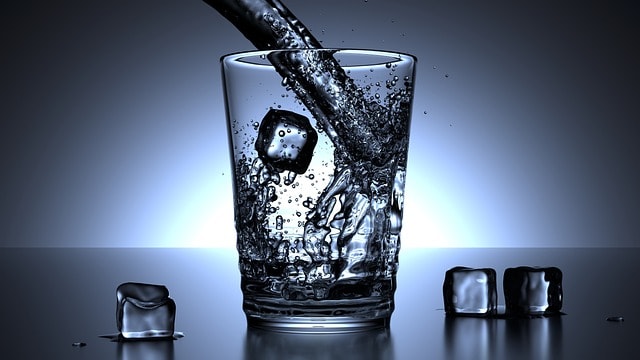
Water quality is often overlooked but plays a crucial role in the taste of your coffee. Using filtered water removes impurities like chlorine and heavy metals that can negatively impact the flavor. This leads to a more balanced and cleaner taste in your coffee.
Filtered water also ensures a consistent brewing experience, allowing each cup to meet your expectations. Whether you’re using tap water or bottled water, filtering it first can make a noticeable difference in the quality of your brewed coffee.
Control Your Water Temperature
The temperature of the water is critical to the coffee brewing process. The optimal range for water temperature is between 195°F and 205°F, which is key for proper extraction. Too hot, and you risk over-extraction, leading to bitter flavors; too cool, and the coffee may be under-extracted and weak.
Using a thermometer can help ensure your water is at the correct temperature before you start brewing. If your hotter water reaches boiling point, let it sit for a minute to cool down slightly before using it. For a French press, aim for an optimal water temperature of around 194°F.
Ensure Even Saturation
Even saturation of the coffee grounds is essential for a balanced extraction and flavor. Stirring the coffee grounds after adding water ensures all the grounds are evenly soaked, preventing dry pockets that can lead to uneven flavor. This step is crucial in methods like pour-over, where water is poured over the grounds in a controlled manner.
Ensuring even saturation can make a significant difference in the quality and taste of your coffee.
Keep Equipment Clean
Clean equipment is vital for brewing great coffee. Coffee oils and residues can build up over time, introducing unpleasant flavors into your brew. Cleaning your coffee brewing equipment weekly with soap and water is recommended, especially if the brewed coffee comes into contact with it.
Using a coffee machine cleaner can effectively remove coffee oils from your equipment. Grinders should also be cleaned regularly to maintain their performance and avoid flavor contamination. Removable plastic parts can be cleaned with soap and water, while metal parts should be cleaned dry.
Grinder cleaning tablets are also effective for maintaining your grinder without dulling the blades.
Bean selection
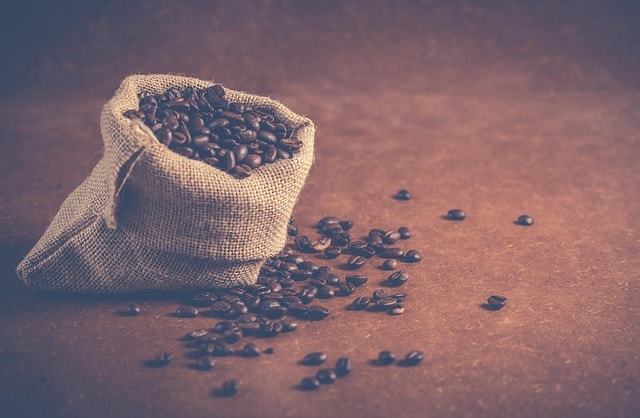
The quality of your coffee beans plays a significant role in the taste of your coffee. Selecting high-quality, freshly roasted beans can make a noticeable difference in your brew. Fresh beans ensure a vibrant and complex flavor profile that pre-ground coffee simply can’t match.
Consider experimenting with different types of beans, such as light, medium, and dark roasts, to discover which flavors you prefer. Each roast level offers unique tastes and aromas, adding variety to your coffee experience. High-quality beans are also essential for making a great cold brew, which benefits from reduced bitterness and acidity.
Head over To Coopers Cask Coffee for a wide selection of high quality coffee beans! All their offerings are single origin and have very distinct flavors. Coopers Cask Coffee specialty is their whiskey offerings if your looking to experiment.
Coffee Bean Storage
Proper storage of coffee beans is crucial to maintaining their flavor and aroma. Here are some essential tips to ensure your beans stay fresh and flavorful:
-
Store Coffee Beans in an Airtight Container: Keeping your coffee beans in an airtight container helps to protect them from air, moisture, and light, all of which can degrade their quality. Look for containers specifically designed for coffee storage, as they are often made from materials that are impermeable to air and moisture.
-
Keep Coffee Beans in a Cool, Dark Place: Avoid storing your coffee beans in direct sunlight or near a heat source, as exposure to light and heat can cause them to lose their flavor and aroma. A pantry or cupboard away from the stove is an ideal spot.
-
Use a Coffee Bean Storage Container: Specialized coffee storage containers are designed to keep your beans fresh for longer. These containers usually have a one-way valve that allows carbon dioxide to escape without letting air in, preserving the beans’ freshness.
-
Freeze Coffee Beans: If you buy coffee beans in bulk, consider freezing them to extend their shelf life. Place the beans in an airtight container or freezer bag and store them in the freezer. When you’re ready to use them, let the beans come to room temperature before grinding to avoid condensation.
By following these tips, you can ensure that your coffee beans remain fresh and flavorful, allowing you to enjoy a delicious cup of coffee every time.
Experiment and Adjust
One of the most exciting aspects of brewing coffee at home is the opportunity to experiment and fine-tune your brewing method. Here are some tips to help you find your perfect cup:
-
Try Different Coffee-to-Water Ratios: The ratio of coffee to water can significantly impact the flavor of your brew. Start with a standard ratio, such as 1:15 (one part coffee to 15 parts water), and adjust to your taste. A higher coffee-to-water ratio will result in a stronger brew, while a lower ratio will produce a milder cup.
-
Experiment with Different Grind Sizes: The grind size of your coffee beans plays a crucial role in the extraction process. Different brewing methods require different grind sizes, so don’t be afraid to experiment. For example, a finer grind is ideal for espresso, while a coarser grind works best for a French press.
-
Try Different Brewing Methods: There are numerous brewing methods to explore, each offering a unique flavor profile and coffee experience. Whether it’s a drip coffee maker, French press, pour-over, or Aeropress, experimenting with different methods can help you discover your preferred brew.
-
Adjust the Brewing Time: The brewing time can also affect the flavor of your coffee. A longer brewing time can result in a stronger, more robust flavor, while a shorter brewing time may produce a lighter, more delicate cup. Experiment with different brewing times to find the perfect balance for your taste.
By experimenting and adjusting your brewing method, you can continuously improve your coffee-making skills and enjoy a cup of coffee that perfectly suits your taste preferences. Remember, the journey to the perfect cup is all about exploration and discovery.
Summary
In summary, making great coffee at home involves a series of carefully considered steps. From selecting fresh coffee beans and using the right grinder to measuring precisely and controlling water temperature, each element contributes to the final cup. Exploring different brewing methods allows you to find a technique that suits your taste and lifestyle.
Remember, the journey to the perfect cup of coffee is one of experimentation and learning. By paying attention to these details, you can enjoy a flavorful and satisfying coffee experience every day. So go ahead, experiment with different beans, grinders, and brewing techniques, and elevate your home coffee game.
Frequently Asked Questions
Why is it important to use fresh coffee beans?
Using fresh coffee beans is crucial because they boost the flavor and aroma of your brew, giving you a more vibrant and enjoyable cup. Trust me, fresh beans make all the difference!
What type of grinder should I use for the best coffee?
For the best coffee, you should definitely go for a burr grinder. It gives you a uniform grind size that enhances flavor and ensures even extraction.
How should I measure my coffee for brewing?
For the best results, use a kitchen scale to measure your coffee; a good rule of thumb is one tablespoon of coffee for every four ounces of water if you don’t have a scale. This ensures you get that perfect brew every time!
What is the best water temperature for brewing coffee?
For the best brew, aim for a water temperature between 195°F and 205°F; this will help you get the perfect extraction for your coffee.
How often should I clean my coffee equipment?
You should clean your coffee equipment weekly with soap and water, especially if it comes into contact with brewed coffee. This keeps your gear in top shape and ensures great-tasting coffee every time!
